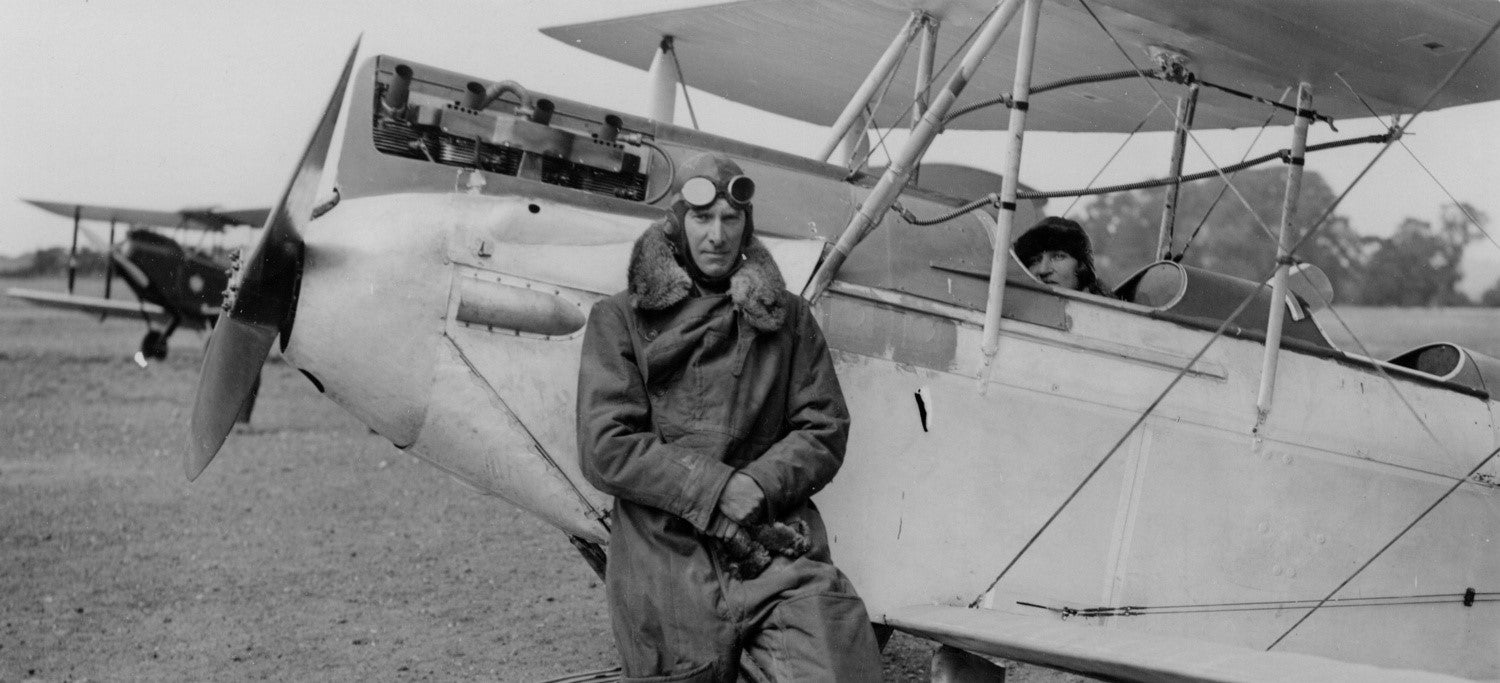
Aviation Appreciation Friday! ~ Geoffrey de Havilland
Geoffrey de Havilland wasn’t just an aircraft engineer—he was a visionary who took aviation to new heights, quite literally. Starting with a dream and a whole lot of determination, he became one of the most influential figures in the history of flight. His story is a testament to innovation, persistence, and the power of believing in what’s possible when the sky’s your limit.
A Humble Beginning with Big Dreams
Geoffrey de Havilland wasn’t born into aviation; he built his path to the skies from the ground up. With financial support from his maternal grandfather, he spent two years crafting his very first aircraft. But when the big moment finally came in December 1909, the flight didn’t go as planned—he crashed almost immediately. Undeterred, de Havilland got back to work and, by 1910, successfully built and flew a biplane powered by a 50-horsepower engine.
Transforming Aviation During Wartime
When World War I broke out, the demand for advanced aircraft was intense, and de Havilland rose to the challenge. As chief designer at Airco, he created planes that were reliable, innovative, and crucial to the war effort. Every design bore his initials, “DH,” a mark of quality and ingenuity that would become synonymous with aviation excellence. His designs, such as the DH.2 and DH.4, played pivotal roles in securing aerial superiority.
After the war, Airco faced financial difficulties and ultimately shut down. But de Havilland wasn’t ready to give up on his passion for flight. In 1920, he founded the de Havilland Aircraft Company, a move that would cement his place in aviation history. Among the company’s groundbreaking designs, the DH.60 Moth stood out as a game-changer. Developed from the earlier DH.51, it made flying more accessible and sparking a boom in private aviation.
The Marvel of the Mosquito
When World War II arrived, de Havilland’s brilliance reached new heights. His company developed the DH.98 Mosquito, nicknamed “The Wooden Wonder.” Why? Because it was made mostly of plywood—light, fast, and incredibly versatile. It excelled in multiple roles, including bomber, reconnaissance, and fighter missions. The Mosquito’s speed, agility, and adaptability made it one of the Allies’ most valuable assets during the war, proving that innovation thrives even in the harshest times.
The Jet Age Pioneer
After the war, de Havilland turned his attention to commercial aviation. His company introduced the Comet in 1952, the world’s first commercial jet airliner. While early models faced setbacks due to structural failures that led to high-profile crashes, de Havilland’s persistence paid off. Redesigns paved the way for future jetliners, revolutionizing air travel and laying the foundation for the modern aviation industry.
Remembering a True Aviation Icon
In his later years, Geoffrey de Havilland remained a prominent figure in aviation. After retiring from active involvement in his company in 1955, he stayed on as president, helping to guide its legacy until it merged with Hawker Siddeley in 1960. His personal life, however, was marked by tragedy, as both his sons, Geoffrey Jr. and John, died in flying accidents while serving as test pilots for the company. Despite these heartbreaks, de Havilland’s passion for aviation never wavered. He continued flying well into his 70s, embodying his lifelong love for the skies.
On May 21, 1965, Geoffrey de Havilland passed away, leaving behind a legacy of innovation, resilience, and vision that continues to inspire aviators and engineers around the world.
